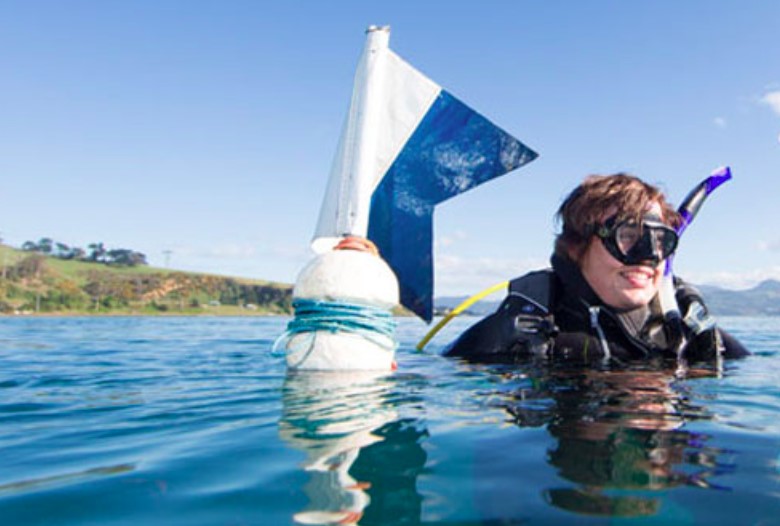Unraveling the Colors and Shapes of Scuba Flags: What Do They Mean?

Beneath the surface of the deep blue, scuba divers enter a world filled with wonder and beauty. However, exploring this underwater realm comes with its own set of challenges and risks, and ensuring diver safety is paramount. One of the key safety measures used by divers is the scuba flag, a simple yet essential tool for communicating important information while submerged. In this article, we will explore the various appearances of scuba flags and decode what they mean to divers.
The Red and White Alpha Flag
When you think of scuba flags, the red and white alpha flag is probably the first image that comes to mind. This flag, featuring a white field with a red letter “A,” is recognized worldwide as a symbol for “diver down.” When displayed, it indicates that there are divers underwater in the immediate vicinity. Boaters and other watercraft are required to keep a safe distance from the flag, typically 50 to 100 feet, to avoid the risk of injuring divers.
The red and white alpha flag is not just a universal symbol; it is also a legal requirement in many countries. Failing to display this flag while divers are in the water can result in penalties, fines, or even criminal charges. It’s a vivid reminder of the importance of safety in the underwater world.
The Red Flag
While the red and white alpha flag is the most recognizable, the red flag, plain and simple, also has its own significance in scuba diving. When flown alone, the red flag serves as a warning to boaters and other watercraft that there is a potential hazard in the area. This could include activities like spearfishing or snorkeling, where divers may surface unexpectedly. In such cases, displaying the red flag is a way to alert others to exercise caution.
The Blue and White Flag
The blue and white flag, featuring a white diagonal stripe on a blue field, is another commonly seen flag in the world of scuba diving. This flag signals the presence of divers in the water, but with a twist—it indicates that the divers are in the water from a vessel that is not anchored, such as a boat drifting or under power. The blue and white flag is especially useful for indicating the movement of divers, helping boats to steer clear of the area.
The Blue and White Alpha Flag
Similar in appearance to the blue and white flag, the blue and white alpha flag includes the red letter “A” in the white stripe. This flag conveys that there are divers in the water from a vessel that is not anchored. It combines the information conveyed by both the red and white alpha flag and the blue and white flag, making it a comprehensive signal for divers and boaters alike.
The Red and White Flag with a Blue Diver-Down Symbol
Sometimes, divers choose to combine the traditional red and white flag with a blue diver-down symbol. This symbol can vary in design but often features a silhouette of a diver. The blue color adds an extra layer of visibility and serves as an eye-catching reminder of the presence of divers below. While not a standardized flag, it’s a creative way for divers to enhance their visibility and safety.
The Yellow Flag
Yellow is a color that signals caution, and in scuba diving, the yellow flag serves precisely that purpose. When displayed, it indicates that there is a diver in the water who may need assistance. This could be a diver who is tired, injured, or in distress. Other boaters and divers who see the yellow flag should approach with care and be prepared to offer assistance if needed.
Conclusion
Scuba diving is a thrilling and beautiful adventure, but it comes with inherent risks that demand careful consideration of safety. scuba flag appearances vary play a crucial role in ensuring the well-being of divers by communicating important information to those on the surface. From the red and white alpha flag to the yellow flag, each flag serves a unique purpose in alerting boaters and fellow divers to the presence of divers below.
Understanding the various appearances of scuba flags and what they mean is not only important for divers but also for anyone who enjoys recreational activities on the water. By adhering to these flag signals, we can all contribute to a safer and more enjoyable underwater experience for everyone.
So, the next time you catch sight of a scuba flag, remember that it’s not just a colorful piece of cloth; it’s a lifeline that ensures the safety of those exploring the hidden wonders beneath the waves.




